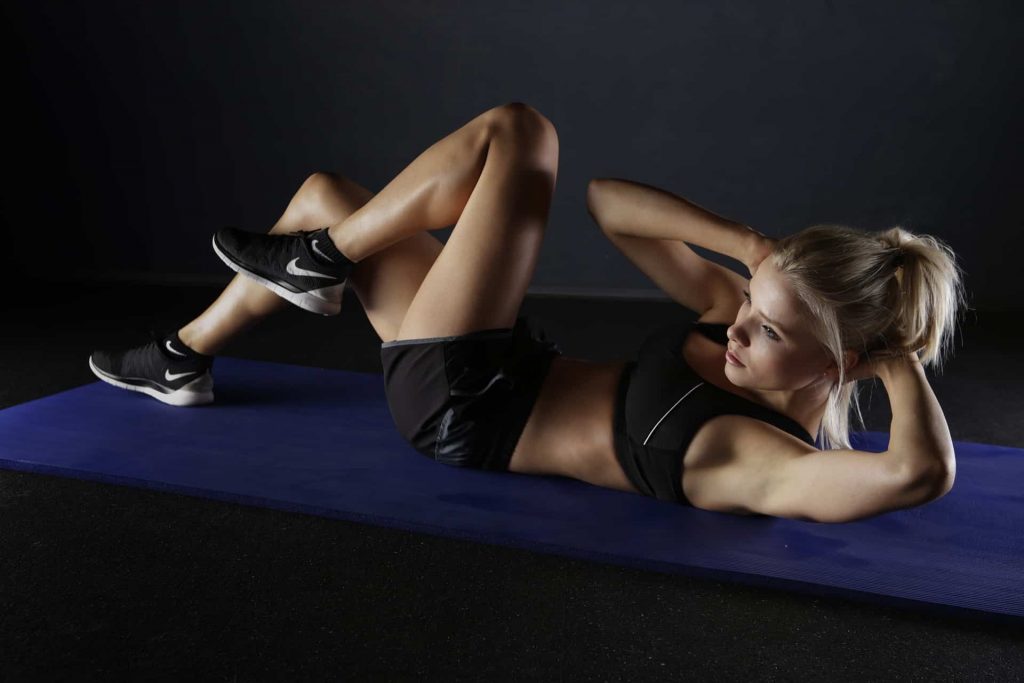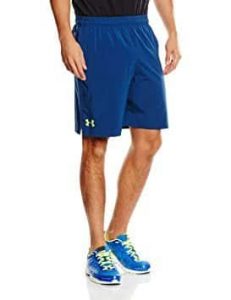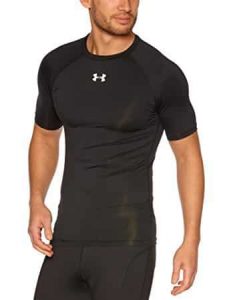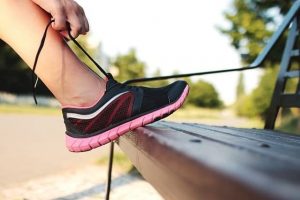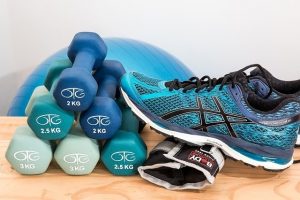Welcome to our 10-minute guide to Tabata workouts.
If you’re looking to get fit, lose weight, burn fat, or improve your core strength, you have plenty of options.
But, if you want to get involved in something that’s intense, and offers not just quick, but impressive results, Tabata training is for you.
We’re going to cover everything you need to know, right from essential gear, exercises for working out at home, and a tonne of videos offering you helpful hints and tips.
Start by watching our 60 second introduction video below, then scroll down for the full guide, or choose a chapter on the right.
Jump To Section
What You Need To Start Tabata Training
You can start Tabata training on a minimalist budget. You don’t even need a gym membership, as you can do all your workouts at home.
Even the things we’ve mentioned below are not 100% essential.
Below are just a few things we’d recommend to make training more comfortable, and to make sure you stick to your program.
#1 – Tabata DVD
Price: $10-20
You’re going to want to get a DVD that focuses on HIIT and Tabata.
If you want to get into Tabata training seriously, these are going to be the best bucks you spend.
I know what you’re thinking. YouTube videos are free, why not use them?
There’s a big problem; adverts.
Will they appear during your rest period? Nope!
They always appear at the most annoying times.
For the sake of a few dollars, it’s worth getting 1-2 quality Tabata DVDs.
One that’s got particularly high reviews on Amazon is:
“Cardio Abs DVD: HIIT cardio interval training”
#2 – Breathable Pants Or Shorts
Price: $12-50
Some people prefer to purposely layer up when doing HIIT.
Why? It makes the body overheat. The body then works over time to try and cool down, and that expels more energy.
Personally, I like to stay at least a little bit comfortable. Layering up makes an already intense workout, well, more intense.
Breathable clothing is going to help you stay as cool as possible.
Anything breathable will do: running shorts, yoga pants, or even tracksuit bottoms.
So, if you are involved in another sport that requires breathable clothing, you can buy something specific to that sport and use it for Tabata too.
Not got anything suitable? Click the link below.
#3 – Breathable Tee
Price: $15-40
I’ve said time and time again I use breathable clothing for lots of activities: hiking, biking, workouts, motocross and more.
I’m a bit tight, so a lot of my kit I use as “multi-purpose”, rather than buying specific kit for every activity I do.
I use an Under Armour breathable tee for anything workout related. It’s lightweight and sweat dries quickly, it’s a great all-rounder.
See our guide to the best breathable tees here.
#4 – Comfortable Training Shoes
Price: $30-100
You’ll want some shoes that are comfortable, breathable, but also durable.
And, the type of shoe you need will depend on where you exercise.
For example, if you are planning to do Tabata workouts at the gym or at home, a standard gym shoe will do.
If you plan to workout somewhere else, you’ll need something more specific.
For instance, trail running shoes will be ideal if you’re a mud-bug and want to keep your workouts, outdoors.
Understanding What Tabata Training Is
What’s The Difference Between Tabata Training & HIIT?
HIIT, or high intensity interval training, is like a genre of movie; it’s a broad term to define a type of training.
And, that training is usually short and sharp – burning fat, as well as improving and boosting cardio, in a short amount of time.
Tabata workouts are a form of HIIT, rather than something completely different.
What Is Tabata Training?
So, for the sake of simplicity, Tabata training is a specific HIIT workout.
It’s a HIIT workout with time intervals of 20-seconds working out (hard), and 10 seconds rest.
The 5 Benefits of Tabata Over Normal Training
People have realised that a leisurely ride on a bike, a walk, or a jog, just doesn’t cut it.
To burn calories and fat, to improve cardio and core strength, you need to be doing something more intense.
And, HIIT programs such as Tabata, are exactly that; intense.
But, what are the benefits?
#1 – You Save Time
Due to the short and sharp nature of these exercises, your workout is going to be shorter than a typical cardio workout.
You’ll see most gym-goers boasting about their “45 minutes on the bike”, or “15km on the treadmill”.
The goal of Tabata is almost the opposite. Sure, it’s about time; as little time as possible.
You want to cram as much intensity, into the smallest possible time frame.
Busy with work lately? No problem. You can complete a Tabata workout in less than 4-minutes.
Sorry, no excuses!
#2 – Muscle Tone Improves, Unlike Dieting
For those looking at Tabata to lose weight, there’s a good chance you’ve exhausted dieting options.
Sure, some people make dieting work. The problem is here, you’re starving your body of much needed nutrients. And, that means you’ll be starving your muscles too.
Most diets for weight-loss are bad for your body.
Muscle weighs more than fat, so as you lose muscle through dieting, you will lose weight.
But, why not burn off the fat using a HIIT program like Tabata, retain and improve muscle tone, and still lose weight?
#3 – Lose Weight While You Sleep
When your body sees an increase in activity, it matches that with an increased basal metabolic rate.
And, that’s a good thing.
Wait, What’s A Basal Metabolic Rate (BMR)?
A basal metabolic rate, is a fairly accurate estimate of how much fat (or calories) you’ll burn over the next 24 hours – if you do NOTHING.
HIIT exercises such as Tabata will increase your BMR dramatically. And, that means, you are literally going to be losing weight whilst you sleep.
Just to repeat, by increasing your BMR through Tabata exercises, you’ll be losing MORE weight (by doing nothing) than ever before.
Sounds good, right?
#4 – Increased Energy Burning Capacity
In technical terms, this relates to your anaerobic and aerobic capacity.
Aerobic capacity is the amount of oxygen your body can absorb.
This is increased dramatically after regular Tabata exercises, and that means you’ll have more fuel (oxygen) for your muscles to continue training. That equals more reps, weight loss and even muscle tone.
Anaerobic capacity relates to the energy your body can burn, without the presence of oxygen. That equals an increased capacity when you get to the stage where you feel like you’re “running on fumes”.
#5 – Your End Goal Is Reached Quicker
If you know anything about bodybuilding, you’ll know you need to go above and beyond what your muscles are capable of, to achieve gains.
They then repair themselves during a rest period, and come back stronger.
In comparison, there’s people lifting light dumbbells, achieving small but long-term improvements in muscle tone.
And, the difference between Tabata (the equivalent of bodybuilding) and normal cardio (the equivalent of lifting light dumbbells) is the same.
Whether you are looking to lose weight, improve muscle mass and tone, or improve your cardio vascular endurance; it doesn’t matter.
Tabata will help you reach that end goal, faster than normal cardio routines would.
The Best Tabata Exercises For Beginners
Now, you know the core benefits of Tabata training, you need to know how to build a solid workout.
If you’re a complete beginner to Tabata, it’s important to ensure you nail down the correct technique for each exercise.
Once you have, you can start to build a solid program that you can stick to.
So, what are the best exercises for Tabata beginners?
#1 – Mountain Climbers
Mountain climbers are a great exercise to build into your Tabata workout.
Here, you’ll be focusing on not just your stamina, but building strength in your legs as well.
It’s important to keep in control of the mountain climber throughout the rep.
Jerky movements will make it easier, but key muscles will be missing out on a workout.
How To Do A Mountain Climber
- Get yourself into the same position you’d use to execute a plank, or a push up.
- You’ll draw one leg towards your hips, tapping your foot on the ground, while the other leg stays in position to balance your body.
- Return your foot (back to the push-up position), and that’s one rep completed. You’ll then focus on the other leg.
- Keep a log of how many you can complete in 20 seconds, and use that as a target for next time.
#2 – Sprinting
Sprinting is used in almost every type of HIIT, and Tabata is no different.
You’re focusing on improving cardio, leg and core strength here.
How To Sprint, Tabata Style
- You can use a treadmill, the sidewalk, or even a trail to execute your sprint.
- Sprint as fast as you can for 20 seconds, drag every bit of energy out of your body.
- Rest for 10 seconds (walk, or jog).
#3 – Push-ups
Your body is going to tire quickly when doing a Tabata workout, especially if you are a beginner.
And, if you focus only on leg strength only, you’ll tire even quicker.
By throwing push-ups into the workout, we’ll be giving our legs a break, but also focusing on different areas of the body; core and upper-body strength.
How To Do Push-Ups
The one thing most people get wrong with push-ups, is posture.
If you don’t have the correct posture, you could induce back-pain. Even if you don’t, some muscles will miss out on the workout and your effort is wasted.
- Get into a plank position, with your feet close together, and your hands shoulder width apart.
- Make sure you hold that posture throughout (think “posture-posture-posture”).
- How far do you go down on a push-up? There’s no right or wrong answer. Some people like to touch their nose or chest on the floor. But, if you are a beginner, aiming to get your elbows bent to around 90 degrees is going to be about right.
Remember, it’s not a competition to see how low you can go.
You want to see how many fast and consistent reps you can do in 20 seconds.
If you flop trying to get your nose down, you’ve ruined this section of the workout.
#4 – Jumping Lunges
I know what you are thinking. Why not just do normal lunges?
Tabata is all about intensity. So, where there’s a chance to add intensity, you should.
Again, we’ll be focusing on leg strength here.
How To Do Jumping Lunges
- To start your 20 second HIIT using jumping lunges, keep your feet together.
- You’ll lunge forward with one leg, and when your foot lands, you want to go down so your knee is at a 90-degree angle.
- Once there, you’ll jump up and switch legs, landing in the lunge position with the other leg.
This is one of those exercises that the first few times, you’ll really feel the burn!
See what you can achieve in 20 seconds, and then give yourself a break.
#5 – Burpees
Next, we’ve got burpees. I’m sure you know what they are, but you probably don’t know how difficult they are.
How To Do A Burpee
The burpee consists of five phases:
- Squat
- Squat thrust
- Push-up
- Frog jump
- Jump squat
Check out this video that shows you exactly how to do a Burpee.
#6 – Squat Jacks
What the heck’ is a squat jack?
People using Tabata training for fitness realised that a squat and a jumping jack alone, weren’t intense enough; so, they combined the two to make the squat jack.
It’s a full-on leg burner, and improves cardio quickly.
How To Do A Squat Jack
- Get into the squat position. This should mean that your hands are in front of you, and your legs are a little wider than shoulder width.
- When you jump, bring your feet together until they touch.
- When you jump again, they should land in the position you started in.
Blast these for 20 seconds and have a break for 10.
Tabata Dumbbell Workouts For Beginners
The exercises mentioned above are good all-rounders.
But, if you want to take your Tabata training to the next step, as well as improving upper-body strength, this section is for you.
What You’ll Need
Alongside our basic kit list at the top of the guide, you’ll need a set of dumbbells.
The weight of the dumbbells will depend on:
- Your current strength
- Amount of reps you aim for in 20 seconds
- Your end goal (muscle tone, lose weight or build muscle)
You can get a set of 6 dumbbells from BalanceFrom for less than $40. They include a 3lb, 5lb and 8lb set.
That’s going to give you enough variation to try different exercises, and to progress.
For muscle toning and fat burning, you want to be doing lots of reps, so the weights above will be more than enough.
However, if you are focusing on muscle building, you’ll want to do less reps and therefore, have dumbbells that are higher in weight.
Ready to get some dumbbells?
The 5 Best Tabata Dumbbell Exercises For Beginners
You can build one or all of the dumbbell exercises into your routine.
Like all Tabata exercises, anything you take from the Tabata dumbbell exercise list below should be done at high intensity for 20 seconds, with a 10 second rest period.
#1 – Renegade Rows
Renegade Rows are popular not with just HIIT fitness freaks, but body builders too.
Why? They build upper body strength (mainly in the tricep area), but they also help to develop core strength too.
How To Do Renegade Rows
- With both weights in your hand, get into the plank (or push-up position).
- Your weights should be in line with your shoulders.
- Keep your plank position, and bring one weight towards your hip.
- Holding it for 1-2 seconds will make the exercise slightly more difficult, and improve strength.
- Get back into the plank position.
- Now switch sides, repeating the process.
#2 – Clean And Press
Although the Clean and Press will build leg muscles, we’re more interested in benefits it offers our shoulders and core.
How To Do A Clean And Press
- Put the dumbbells by your side.
- Do a slight squat and get the dumbbells into position above your shoulders.
- With another slight squat, you’ll extend your arms above your head.
- In a controlled manner, bring the dumbbells just above your shoulders, and then back to your side.
https://www.youtube.com/watch?v=r2QhWKxKt8A
#3 – Dumbbell Bench Press
Now we’ll move onto the chest, and specifically, our pectorals.
As we’ll be aiming for a high number of reps with each 20-second session, the dumbbell bench press will also help to build the deltoids in the back of the arms.
You don’t really get this benefit unless you do a lot of reps.
How To Do A Dumbbell Bench Press
- Grab both of your dumbbells.
- Lie down on the bench you’ll be using.
- Bring the dumbbells down so they are level with your body, just at the point where you have to stretch muscles to pull them back any further.
- Keeping your arms completely straight, and holding core posture, push upwards.
- Hold them there for 1-2 seconds.
- Bring them back in line with your body.
- Repeat!
#4 – Bent Over Rows
A lot of people focus too much energy on triceps, biceps and abs. It’s probably a vanity thing!
If you want to genuinely increase your core, and muscle tone in the process, Bent Over Rows are a fantastic way to do it.
They focus on all the muscles in your back. Execute them in a HIIT scenario, and you’re going to see big results; fast.
How To Do Bent Over Rows
- Get your feet positioned so they’re roughly shoulder width apart.
- Bend your knees slightly.
- Keep your back straight, and chest up, keeping a strong posture.
- You’ll need to bend over to approximately a 60-degree angle.
- Pull each of the dumbbells towards your rib cage in a controlled manner.
- Release them back to the starting position.
- That’s a rep!
#5 – Dumbbell Lunges
This is a great exercise for those looking to burn fat.
Naturally, that means if you’re looking to improve muscle tone too, these are going to be great.
How To Do Dumbbell Lunges
- Grab your dumbbells and control your posture with your core.
- Space your legs approximately shoulder width apart.
- Step forward to a point where your front knee is at a 90-degree angle.
- Return to your original position, and alternate to your other leg.
- Remember to keep your core in position throughout, don’t bend or twist your back!
The 3-Minute Fat Burning Tabata Workout
Don’t you just love Tabata? A 3-minute workout. Yup. 3-minutes!
If you’re a beginner to Tabata, you’ll need to get a program together that consists of three things:
- A warmup
- Your workout
- A cool down
There’s nothing complicated about this setup.
You’ll be able to do this workout from home, at the gym, or even outside.
Tabata Warmup
Most of us are tense after a full day at work.
Your average gym cardio session isn’t going to push your body too much (but you should still warm up).
But, your Tabata training program is going to max out your body for 3-4 minutes, and more as you progress from the beginner stage.
If you don’t warm up, you’ll risk damaging muscles, joints and ligaments.
How To Warm Up For Your Tabata Workout
Your 3-Minute Training Plan
Each exercise should be completed for 20-seconds at high intensity.
Do as many reps as you can in those 20-seconds.
This is then followed by a 10-second rest period before moving onto your next exercise.
This short program will take 3 minutes in total.
#1 – Mountain Climbers
#2 – Sprinting
#3 – Push-ups
#4 – Lunges (Jumping)
#5 – Burpees
#6 – Squat Jacks
Dumbbell Exercises For Your Tabata Workout
Not everyone uses dumbbells, so we’ve added these as an optional extra.
#1 – Renegade Rows
#2 – Clean And Press
#3 – Dumbbell Bench Press
#4 – Bent Over Rows
#5 – Dumbbell Lunges
How To Cool Down After A Tabata Workout
Congrats! You’ve completed your Tabata workout.
Now, you’ll need to cool down.
Tabata Training Nutrition Guide
It doesn’t matter whether you’re doing Tabata workouts for cardio, core strength, muscle tone or to lose weight; you need to have a balanced diet.
A lot of people looking to lose weight, make the big mistake of not eating correctly, or enough.
Tabata HIIT is incredibly hard on the body, and you’ll be expelling plenty of energy.
Naturally, your BMR will increase. That means, you’ll burn off more calories than usual, even when you’re not working out.
So, this isn’t a calorie counting mission.
And, if it is, you should be focusing on making sure you get enough, not starving yourself.
If you’re not going to consume enough of the right foods, this form of HIIT isn’t going to be effective.
Do something else.
In our quick-fire nutrition guide we’ll cover both pre-workout and post-workout guidelines.
Pre-Workout
How Long Before A Workout Should You Eat?
You’ll want to consume something substantial around 4 hours before your workout.
So, if you’re at work and are planning to train as soon as you get home, this means getting a late lunch.
You’ll be able to consume snacks up to 30 minutes before a workout.
Although, preferably, you’ll have consumed anything you need at least 1 hour before you start.
Being bloated and high intensity training, rarely go hand in hand.
What Type Of Meal Is Suitable Pre-Workout?
You’ll want foods that are high in carbs, but also contain some protein. A good example would be scrambled eggs on toast.
If you’re looking to also consume a pre-workout snack, grab something small, that’s full of energy.
Post-Workout
Now you’ve completed your HIIT workout, you’ll need to replenish your body’s energy sources.
Again, if you are trying to lose weight, don’t skip this step thinking it’s going to help.
You need to keep your body fuelled, which in turn will keep your BMR high (and burn fat in your sleep).
How Soon After A Workout Should You Eat?
The sooner the better. Realistically, you want to be consuming something within 20-30 minutes.
We’d prefer something substantial. But, constraints of life don’t always allow this to happen.
So, at the bare minimum, consume a snack within that 20-30-minute period.
This could be a slow-energy released snack like a pitta bread with hummus, or whole grain cereal.
Then, get straight to work, making something substantial.
You’ll want to create a meal that’s got a nice balance of carbs and protein. The meal should contain around 2-3 times the amount of carbs, as it does protein.
Try and consume this within 90-120 minutes of your session ending.
Where To Do Tabata Training
The Gym 
Check your local gym, and grab a list of their classes.
Tabata is quite a specific form of HIIT training, so not all gyms will have Tabata classes.
Find Partners
The last thing most people want to do when they get home from work, is workout.
So, there’s a good chance your friends and family think you’re crazy when you said you want to work out; intensely.
There’s a group of members on Meetup that advertise their local training groups.
It’s quite a small group, with just under 60 meetups and 1,000 members.
BONUS: Interesting Tabata Websites & YouTube Channels
Websites
Meetup
Looking for partners for HIIT? Look no further than Meetup.com that has nearly 60 meetups and over 1,000 members.
YouTube Channels
Workout Music Source
Looking for some motivational music for your Tabata training?
Workout Music Source has a tonne of preassembled playlists ready to use, to keep you going throughout your program.
https://www.youtube.com/watch?v=q0mBIasuR9c
The Body Coach TV
The Body Coach TV isn’t Tabata specific, but there’s some cool workout videos, and a tonne of tips.
It’s got over 400,000 subscribers, and is well worth checking out.
What’s Next?
Thanks for reading our 10-minute beginner’s guide to Tabata training and workouts.
Hopefully, you’ve grabbed enough information to get motivated, and get started.
Want to get our next HIIT article? Sign up to our email list and we’ll drop you a message when it’s live.
